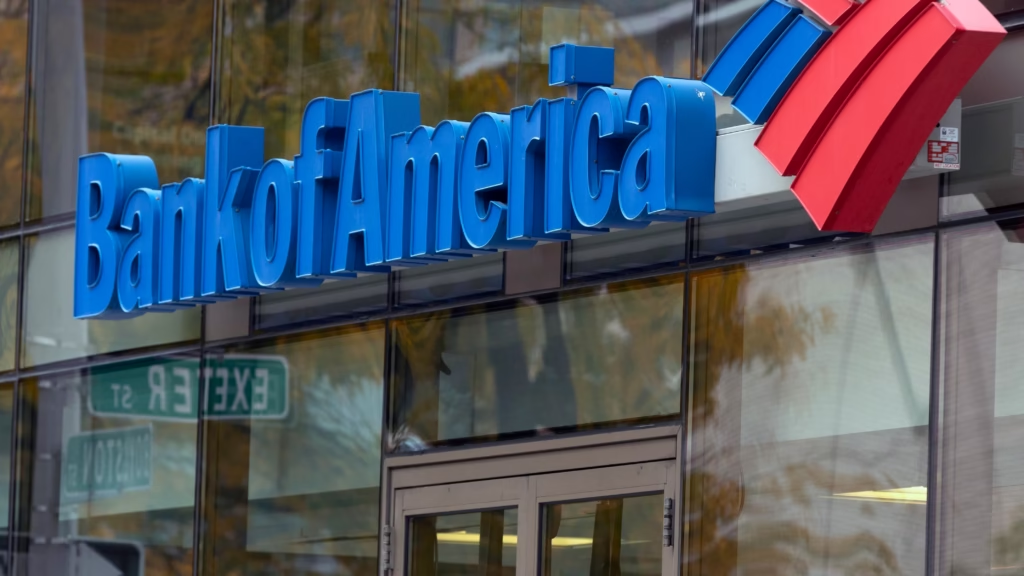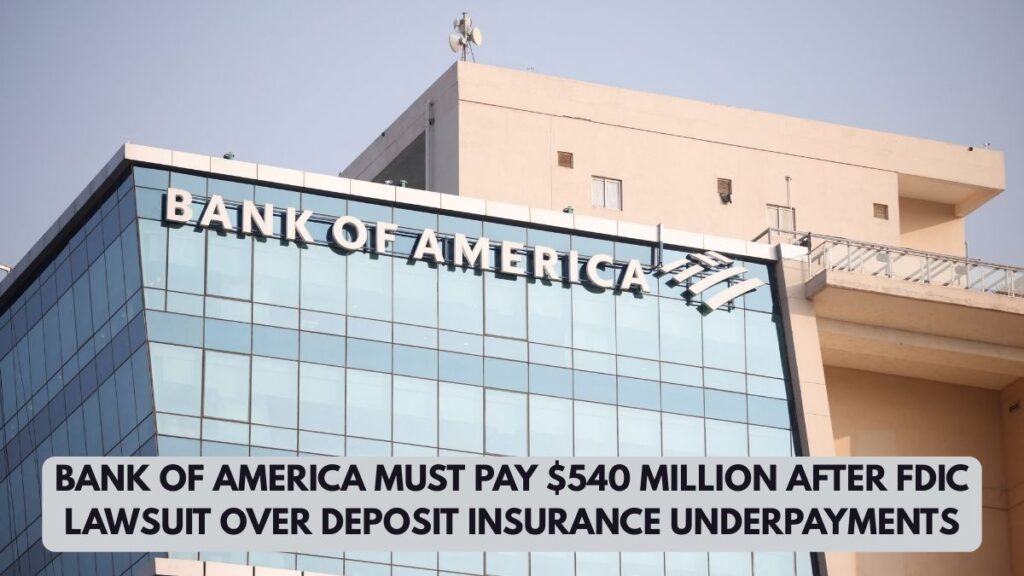In a major legal development, Bank of America has been ordered by a federal judge to pay $540.3 million to the Federal Deposit Insurance Corporation (FDIC), concluding a years-long lawsuit tied to underpaid deposit insurance assessments.
The case, filed in 2017, accused the banking giant of underreporting its counterparty risk exposure, a critical metric that influences how much a financial institution must pay into the FDIC’s Deposit Insurance Fund.
These payments are crucial as they support the fund that insures customer deposits up to $250,000 per account in the event of bank failures.

What the Ruling Means
U.S. District Judge Loren L. AliKhan ruled that Bank of America must compensate the FDIC for underpaid assessments from Q2 2013 through the end of 2014, including accrued interest.
While the FDIC initially argued the underpayment could exceed $1 billion, the court ultimately limited the payable amount to $540.3 million, citing statute of limitations constraints.
The court determined that the FDIC delayed too long in suing for assessments before April 2013, even though the bank’s reporting strategy was already under scrutiny by that time.
📄 Read the official court ruling summary here
Background of the Dispute
At the heart of the case lies a 2011 FDIC rule, which mandated that large banks report their risk exposure at the consolidated entity level.
According to the FDIC, Bank of America failed to accurately account for the risk tied to certain counterparties—essentially other financial institutions and borrowers—thereby lowering its insurance premiums unfairly.
The FDIC alleged that this misreporting led to significant underpayments and that Bank of America gained a financial edge by skirting full compliance.
Bank of America’s Defense
Bank of America pushed back against the allegations, stating that its reporting approach was fully transparent and that the FDIC had long been aware of it. The bank’s defense emphasized that the disagreement was technical, not deceptive, and stemmed from a rule that evolved over time with ambiguous guidelines.
A spokesperson noted, “We believe the FDIC’s allegations stem from a misunderstanding of the reporting rule rather than any wrongdoing on our part.”
Despite the ruling, Bank of America remains financially robust, having recently reported $7.4 billion in first-quarter profits for 2025. This suggests that the $540 million payout will have little impact on its operations or shareholder value.
FDIC’s Role and the Importance of Deposit Assessments
The FDIC plays a crucial role in maintaining trust in the U.S. banking system by insuring deposits and managing the Deposit Insurance Fund (DIF). When banks underpay their required assessments, it threatens the integrity of the system and places undue burden on compliant institutions.
The lawsuit signals the FDIC’s intent to enforce transparency and proper reporting, especially among major financial institutions whose failures could trigger systemic financial risk.

Legal and Financial Impact Going Forward
This case sets a precedent for how aggressively regulatory bodies like the FDIC can pursue retroactive assessments, and underlines the risks financial institutions face if they interpret regulatory rules too loosely.
While Bank of America has not confirmed whether it will appeal the decision, the outcome serves as a warning to other major banks that regulatory compliance must be meticulous, especially concerning federal insurance funds.
If you’re a consumer or business concerned about deposit insurance coverage or changes in regulatory policy, you can explore the FDIC’s consumer protection tools here.
This article has been carefully fact-checked by our editorial team to ensure accuracy and eliminate any misleading information. We are committed to maintaining the highest standards of integrity in our content.

Himanshu Sharma writes for Weekend Spy, focusing on recruitment, government schemes, and current affairs. He is dedicated to making complex information accessible to readers.
Himanshu enjoys playing chess, hiking, and trying new recipes, always seeking ways to combine his love for writing with his passion for exploration. Connect with Drop him an email at [email protected].







